Engagement Ring - In Progress
Setting
Stone
We guarantee that every single purchase directly impacts one person's life by giving them access to clean water.
Marquise diamonds are elegant, softly curving diamonds with pointed ends. They are quite rare! In fact, at the time of writing, only 1.5% of GIA-certified diamonds available for sale globally were Marquise (18,191 diamonds out of 1,178,007 total diamonds). Rumor has it that in the mid-1700s, the cut was developed for King Louis XIV, who commissioned a diamond in the shape of the lips of his lover, the Marquise of Pompadour.
Couples choosing a this shape are in luck. This is because Marquises are generally less expensive than other shapes, and look larger too! In addition, Marquise cuts elongate the fingers, making an elegant engagement ring. Couples selecting a Marquise cut diamond should be aware of two key features that affect the gem’s beauty: the bow-tie effect and length to width ratio.
Also known as a “navette,” Marquise cuts may be slender and long, or plump and wide. However, the majority are around twice as long as they are in width. The most important aspect of a Marquise is its graceful cut. This will ensure it shows its noble birth and sparkles!
Like other fancy cut diamonds, the GIA does not grade Marquise cut quality. For this reason, it is important to note that any jeweler that advertises a GIA-certified Marquise with a cut grade is offering their own opinion of its cut. In other words, a GIA certificate will not have a cut grade. There is also no industry standard for what makes an “Ideal Cut Marquise.” However, there are tips and tricks to choosing a great stone.
BOWTIES
Here is an example of a beautifully cut marquise with even contrast and brilliance, compared with a distracting, dark marquise cut bowtie:


Here are additional table and depth percentages we recommend to our couples:
| IDEAL/EXCELLENT | PREMIUM | GOOD | |
| TABLE | 53-63 | 64-65 | 66+ |
| DEPTH | 60-63 | 64-66 | 67+ |
The color grade of a diamond refers to how much color (or lack of a color) the diamond shows. D, E, and F color diamonds are “colorless,” like water. Stones in the G through Z ranges have increasing amounts of yellow tint.
Like most diamonds, smaller Marquise hide more color than larger stones. However, because of the way Marquises are cut, they look larger than other diamonds. So, couples may wish to select a D-F color for a more truly colorless, ice-white appearance. The color of your setting also plays a role: if you choose a warm metal (like yellow or rose gold) you can hide some diamond color! If you choose a white metal (like platinum, palladium, or white gold), you want to stick with more colorless options.
Here is an example of an E colored marquise next to an I colored marquise diamond:


Here is a chart of what we recommend, based on size and setting color:
| WHITE METAL | YELLOW OR ROSE METAL | |
| >1ct | D-G | D-I |
| 1-2ct | D-G | D-H |
| 2+ct | D-F | D-G |
The clarity of a diamond is how “crystal clear” the diamond is. Almost all diamonds have “inclusions”, or internal markings, that are the birthmarks of a gemstone. The less inclusions a gem has, the more “flawless” it is. Many inclusions are too small to see without magnification. Fortunately, as Marquises are brilliant cut, they hide blemishes fairly well within their sparkle.
It is harder to see flaws on smaller diamonds than larger ones. So, a smaller Marquise may have a lower clarity rating and still maintain an eye-clean appearance. However, as Marquise diamonds look larger than other diamonds, you still want to be cautious and have us (or your jeweler) verify that the diamond meets your clarity expectations. The chart below can help you select the right Marquise, based on your preference of clarity.
Here is an example of an SI1 clarity marquise next to a VS1 clarity marquise:
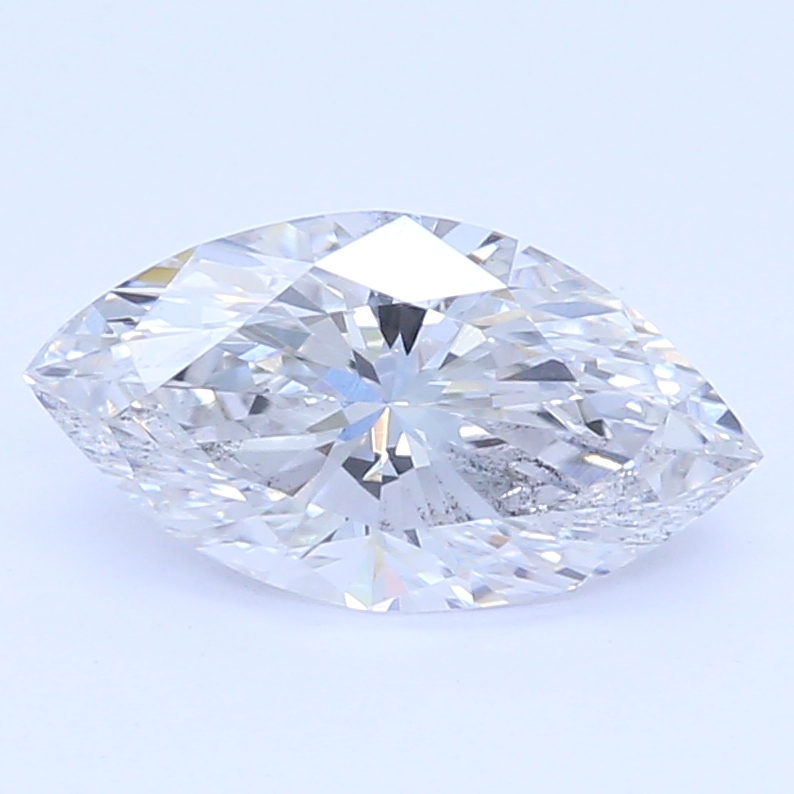
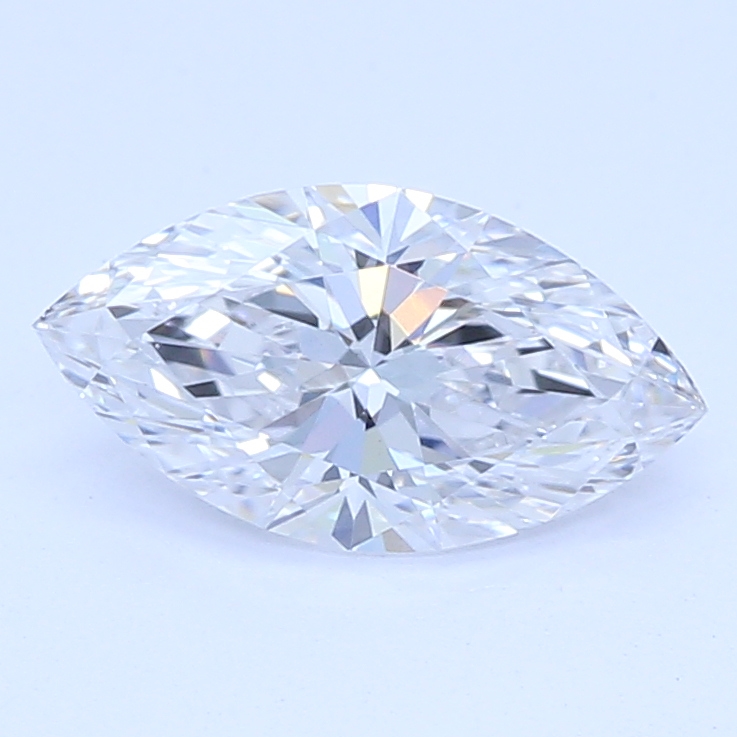
Here is what we recommend to our couples:
| CLARITY | |
| >1ct | SI1+ |
| 1-2ct | VS2+ |
| 2+ct | VS1+ |
All diamonds in our search engine have the length to width ratio listed. This ratio, which is simply the length divided by the width, determines how skinny or plump the Marquise is. Specifically, the larger the length to width ratio, the skinnier the stone. Likewise, the smaller the length to width ratio, the plumper the stone. Length to width preference is quite subjective. Choose whatever you love!
PLUMP MARQUISE
Couples that want a plump Marquise should look for length-to-width ratios closer to 1.6 (you can go lower if you want a real plump stone!)
SKINNY MARQUISE
Couples that want a long, skinny Marquise should look for length-to-width ratios closer to 2.2 (you can go much higher if you want more of an avant garde shape.)
HALO ENGAGEMENT RINGS
If you opt to set your Marquise in a halo setting, the diamond can end up looking wider. This is because the halo adds width to your stone, taking up a larger portion of your finger. To avoid your diamond from looking wider than you want, choose a Marquise diamond with a slightly higher length to width ratio than your original preference when choosing a halo setting.
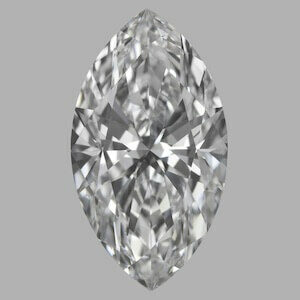
1.80
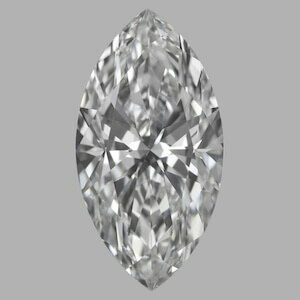
1.90
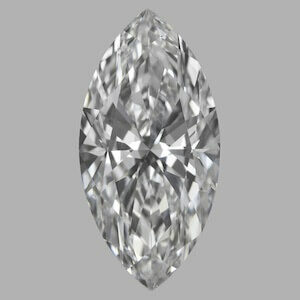
2.00
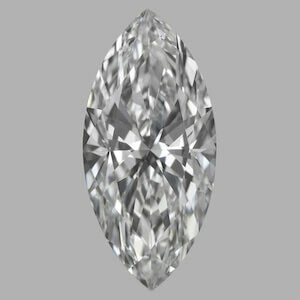
2.10
When looking for a Marquise, make sure to pay close
attention to the overall shape of your stone, and to maximize the size. Always ensure the gem you select does not have a dark bow tie in the center – that is a waste of money! Also, make sure your Marquise is evenly proportioned, with soft arcs and defined points. These ensure the enduring value of your stone. Finally, always try to maximize measurements within your diamond. For example, you can have a 1.0 carat Marquise diamond measuring 10.50 x 5.30 mm with an ideal cut. But there could also be a 0.96 carat diamond measuring 10.60 x 5.40 mm that is just as ideally cut while also being less expensive.
All diamonds in our “Recommended” stone section above have had their dimensions reviewed to make sure they were being maximized for their carat weight, while maintaining an ideal cut.
01.
Photo & Video - Always ask the jeweler for a detailed picture or video. Look for bow tie effect and symmetrical shape.
02.
Inspect It - Ask the jeweler to pull the stone and actually inspect it. Confirm consistent color from each point to center.
03.
Measure It - Make sure your diamond’s measurements are maximized within your carat size.